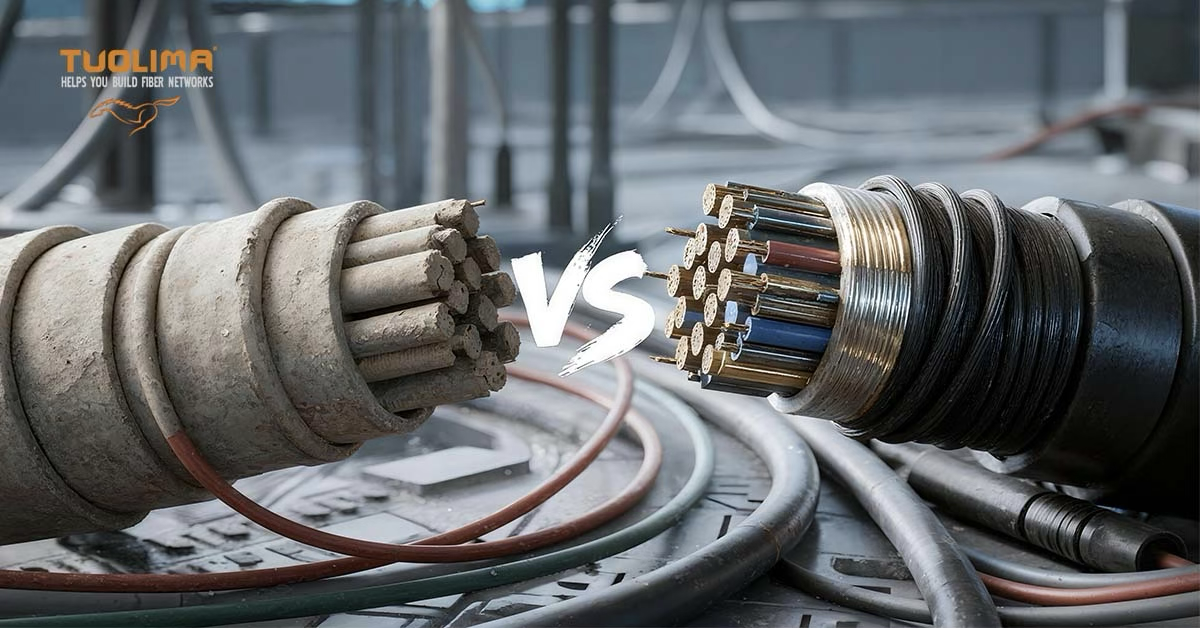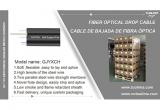In today’s competitive telecommunications market, buyers are often torn between two options: purchasing low-cost fiber optic cables to save on upfront costs or investing in high-reliability fiber optic cables that promise long-term stability. At first glance, cheap solutions may look attractive, especially in cost-sensitive projects. However, when evaluating the total cost of ownership (TCO) and the operational risks associated with network failures, the picture changes dramatically.

This article explores the real trade-offs between budget fiber optic cables and durable outdoor solutions like ADSS cables, highlighting why reliability should be the priority for network planners, ISPs, and utility companies, particularly in regions with challenging climates such as South America.
The Appeal of Low-Cost Fiber Optic Cables
It’s no secret that project managers and contractors often face budget pressure. A kilometer of low-cost outdoor fiber optic cable might appear 20–30% cheaper compared to higher-grade options. For short-term projects or non-critical deployments, the savings seem logical.
Typical reasons buyers choose low-cost cables include:
Lower upfront investment
Faster procurement cycles
Meeting immediate installation deadlines
Pressure from competitive bidding environments
Yet, these cables often fail to meet rigorous industry standards such as IEC 60794, ITU-T G.652D, or GR-20 mechanical tests. The compromise in material quality—such as thinner jackets, weaker tensile strength, and insufficient UV resistance—leads to frequent issues once the cable is exposed to real-world conditions.
The Hidden Risks of Cheap Fiber Optics
While low-cost fiber may reduce initial project expenses, the hidden risks can be severe:
1.Shorter Lifespan
Cheap outdoor cables often last only 5–8 years before requiring replacement, while high-quality ADSS cables typically sustain performance for 20–30 years.
2.Environmental Vulnerability
In regions like Brazil, Chile, or Colombia, high humidity, UV radiation, and heavy rains accelerate jacket degradation, leading to water ingress, fiber attenuation, and signal loss.
3.Higher Maintenance Costs
Frequent network outages demand costly technician visits, emergency splicing, and in some cases, complete cable replacement.
4.Safety and Reliability Issues
In power utility environments, improperly designed cables can be hazardous when installed along high-voltage lines. Low-grade dielectric strength makes them unsuitable for overhead power line applications, leading to downtime and safety risks.
In short: the cost savings are often erased within a few years due to maintenance and reinstallation expenses.
Why High-Reliability Fiber Optic Cables Deliver Long-Term Value
On the other hand, reliable outdoor fiber optic cables, especially All-Dielectric Self-Supporting (ADSS) cables, are engineered to withstand environmental stress and provide long-term stability. While the upfront cost may be 15–30% higher, the extended service life and reduced maintenance make them more cost-effective in the long run.
Key advantages include:
20–30 Year Lifespan → Reduced need for reinstallation, making it the preferred choice for critical infrastructure.
High Tensile Strength → Supports long spans without metal reinforcement, suitable for challenging terrains.
UV and Water Resistance → Double-sheathed designs resist humidity and extreme sunlight, ensuring durability in tropical climates.
No Electrical Interference → ADSS cables are non-metallic, making them safe for deployment on power utility lines without grounding risks.
Compliance with Standards → Reliable fiber optic cables undergo GR-20 testing, ensuring crush resistance, flexibility, and stable attenuation over decades.
For utility providers, ISPs, and government projects, this means network uptime, reduced operational risk, and better ROI.
Case Example: South American Market Challenges
The South American fiber optic market has witnessed rapid expansion, particularly in rural and power-line deployments. However, the continent’s extreme climates—from the Amazon’s humidity to the Andes’ freezing conditions—pose unique challenges.
Low-cost cable failures: In one instance, a regional ISP in Brazil installed budget fiber cables across a 40 km span. Within three years, UV degradation caused multiple outages, forcing a full network replacement—doubling the original project cost.
Reliable ADSS deployment: Conversely, utility companies in Chile have successfully operated ADSS outdoor fiber optic cables for more than 20 years with minimal maintenance, even in areas prone to heavy snow and wind loads.
These cases highlight the importance of reliability when planning infrastructure for the long haul.
Why Our ADSS and Outdoor Fiber Cables Are the Right Choice
With over 20 years of expertise in fiber optic cable manufacturing, our company designs and delivers high-reliability outdoor solutions tailored for demanding markets.
Our ADSS fiber optic cables are:
Designed for extreme weather resistance (UV, ice, wind, humidity)
Available in a wide range of fiber counts (12–144 cores) for scalable networks
Certified against IEC and GR-20 standards
Proven to last 20+ years in field deployments
We understand that network operators in South America and beyond need solutions that balance cost-efficiency with long-term stability. By choosing our products, buyers minimize downtime, lower maintenance budgets, and secure a future-proof investment.
Conclusion: Don’t Just Look at the Price Tag
When comparing low-cost vs. high-reliability fiber optic cables, the conclusion is clear: short-term savings often lead to long-term headaches. For mission-critical projects—whether utility networks, backbone communication lines, or rural broadband deployments—investing in reliability is the smarter financial decision.
Contact us today to learn how our ADSS and outdoor fiber optic cable solutions can help you reduce total cost of ownership while ensuring decades of reliable performance.
Related Products
IP68 Fiber Optic Splice Closures — Designed to provide secure and reliable protection for fiber optic joints
Aug 02-2024

Enhancing Campus Connectivity: GJYXCH Fiber Optic Cable in Educational Networks
Jan 09-2024

Elevating Urban Infrastructure: GJYXCH Fiber Optic Cable in Smart City Networks
Jan 07-2024